Have you ever wandered into a space where time seems to stand still, where each product embodies the breath of earth, fire, and the artisan’s soul? Join us to explore Bien Hoa Pottery Village, a hidden gem nestled by the gentle Dong Nai River, preserving and developing a traditional pottery craft that has existed for over 300 years. Visiting Bien Hoa Pottery Village allows you not only to admire exquisite ceramic artworks but also to immerse yourself in the peaceful atmosphere of the craft village, feel the slow pace of life, and discover unique cultural values.
Bien Hoa Pottery Village, Dong Nai: The Cradle of Southern Vietnamese Fine Art Ceramics
Bien Hoa Pottery Village, also known as Dong Nai Pottery Village, is a cluster of pottery production facilities spread across Tan Van, Buu Hoa wards, and Tan Thanh, Hoa An communes in Dong Nai province. This place is renowned as the cradle of fine art ceramics in the Southern region of Vietnam, giving rise to famous pottery lines such as Bien Hoa pottery, Tan Van pottery, Hoa An ceramics, and more.
With a history dating back to the late 19th and early 20th centuries, Bien Hoa Pottery Village is not only a major pottery production center but also an important part of Vietnamese cultural heritage. It was once the starting point for the development of many other pottery villages in the South, such as Binh Duong and Thu Duc, contributing to creating a unique identity for Vietnamese ceramics on the world pottery map.
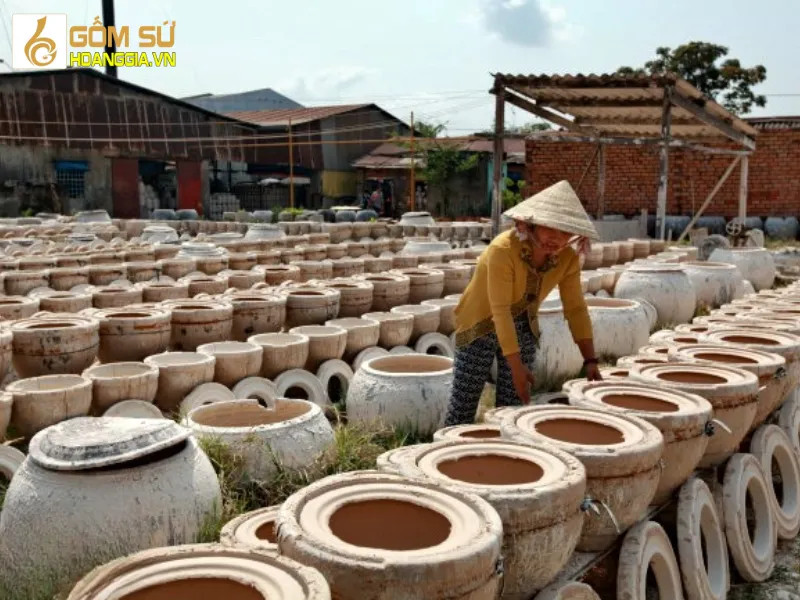
History of Bien Hoa Pottery Village: Golden Imprints of Vietnamese Ceramics
The history of Bien Hoa Pottery Village is closely linked to the development of Bien Hoa – Dong Nai region from the late 19th century. During this period, the demand for ceramic household items and decorations increased, creating favorable conditions for the pottery craft to flourish. Talented potters from all over gathered here, bringing their techniques and secrets, together building a bustling ceramic center.
Notably, in 1903, the Bien Hoa School of Practical Arts (École Pratique d’Art Industriel de Bien Hoa) was established, marking a significant turning point in the history of the pottery village. The school not only trained many generations of talented artisans but also contributed to researching and improving the techniques and aesthetics of Bien Hoa pottery, elevating it to a new level. The early 20th century is considered the golden age of Bien Hoa Pottery Village, when Bien Hoa pottery products were exported to many countries worldwide, conquering even demanding markets like France and Japan.
Despite experiencing many historical upheavals and market competition, Bien Hoa Pottery Village has persistently survived and developed, maintaining its position as one of the leading ceramic centers in Vietnam. Today, Bien Hoa pottery products not only carry economic value but are also symbols of culture, art, and the quintessence of traditional craftsmanship.
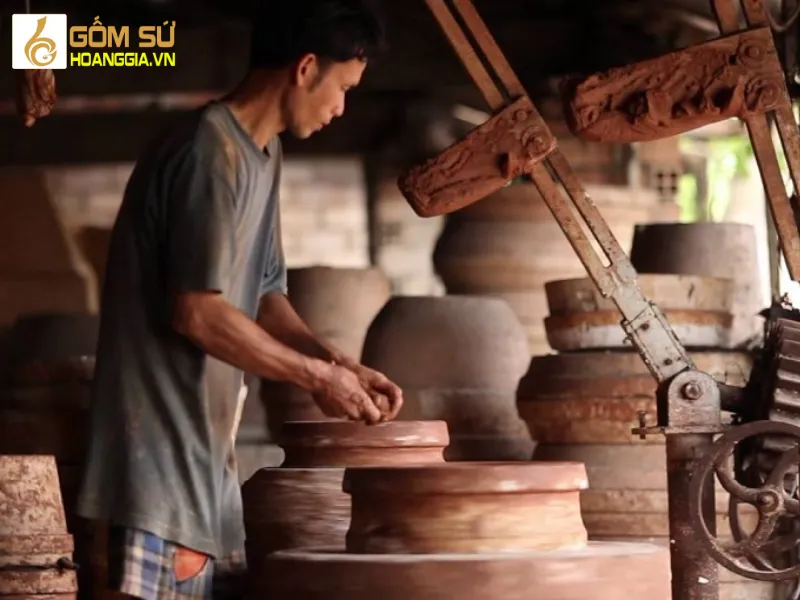
Location and Directions to Bien Hoa Pottery Village
Bien Hoa Pottery Village is located in Trang Bom district, Dong Nai province, about 10km from the center of Bien Hoa city and about 40km from Ho Chi Minh City. With its convenient location, visitors can easily travel to the pottery village by various means of transport.
- Motorbike and private car: From Ho Chi Minh City, you can take National Highway 1A or National Highway 51 to Bien Hoa. Then, continue towards Trang Bom and follow the signs to reach the pottery village. The route is quite easy and convenient.
- Bus: There are many bus routes from Ho Chi Minh City and neighboring provinces to Bien Hoa. From Bien Hoa bus station, you can take a motorbike taxi, taxi, or local bus to the pottery village. Popular bus routes you can refer to are route number 01 (Bien Hoa Bus Station – Trang Bom), route number 04 (Bien Hoa Bus Station – Vinh Cuu).
- Taxi and ride-hailing services: Taxi and ride-hailing services (Grab, Be…) are very common in Bien Hoa, you can easily book a car to travel to the pottery village quickly and comfortably.
- Bicycle and walking: If you are a fan of exploration and have time, you can rent a bicycle or walk to the pottery village if you are near the area. This is a great way to enjoy the fresh air and peaceful countryside scenery along the way.
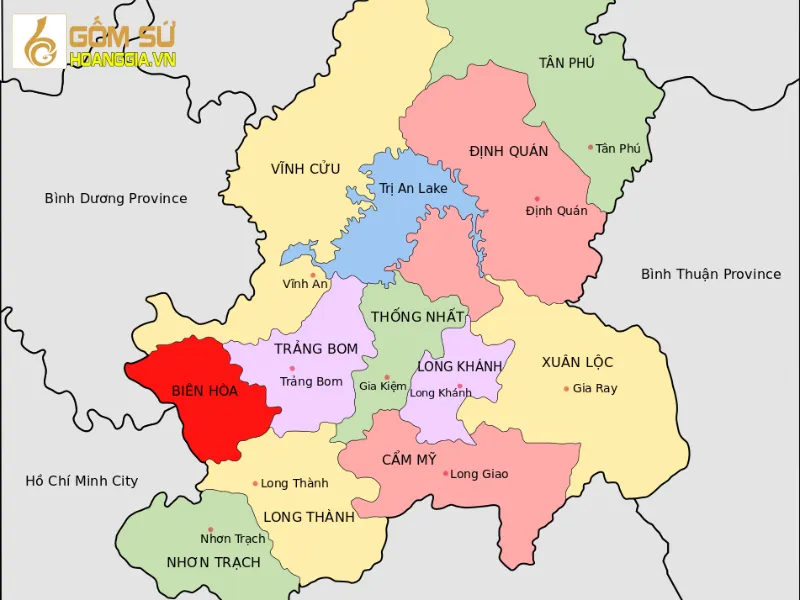
Entrance Fees and Experiences at Bien Hoa Pottery Village
Good news for visitors is that Bien Hoa Pottery Village is open for free visits from 7:00 AM to 5:00 PM daily, every day of the week. You can freely explore the craft village space, admire pottery products, and learn about the pottery production process without any entrance fee.
However, if you want to experience more deeply and participate in unique activities at the pottery village, you can choose from the following service packages (reference prices):
| Ticket Type | Price (VND/person) |
|---|---|
| Visit the pottery exhibition area (1st, 2nd, 4th floors) | 50,000 |
| Visit the contemporary art center (3rd floor) | 50,000 |
| Pottery making experience (ground floor) | Adults: 70,000 |
| Children: 50,000 | |
| Zen tea and artwork viewing at Huong Sa Art House (5th floor) | 40,000 |
| Costume rental for photos at Huong Sa Art House | 100,000/session |
With reasonable prices, you can fully enjoy unique and memorable experiences at Bien Hoa Pottery Village, from exploring the history and culture of ceramics to creating your own unique pottery products.
Artisans of Bien Hoa Pottery Village: Those Who Breathe Soul into the Clay
To create the unique and exquisite Bien Hoa ceramic products, the role of talented artisans cannot be ignored. They are the children of the village, growing up with the sound of clay and fire. With skillful hands and passionate hearts, they breathe soul into each pottery product, turning inanimate clay blocks into lively works of art.
Artisans of Bien Hoa Pottery Village not only inherit and promote traditional techniques but also constantly innovate and explore new styles, meeting the increasing demands of the market. They are the keepers of the flame for the traditional pottery craft, and also the pioneers who take Bien Hoa pottery further.
The difference in the crafting style of Dong Nai pottery artisans compared to other regions, especially the North, is clearly reflected in each product. If Northern pottery emphasizes solemnity and antiquity, Bien Hoa pottery is imbued with a liberal spirit, close to nature and the life of Southern people. The diversity of culture and ethnicity in Dong Nai also contributes to the richness and uniqueness of Bien Hoa pottery aesthetics.
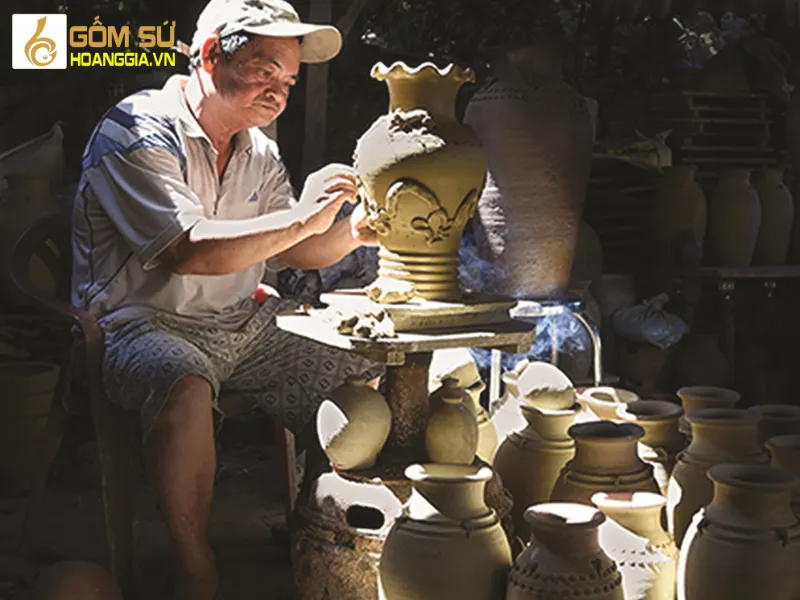
The Process of Creating Bien Hoa Ceramics: From Clay to Artwork
The production process of Bien Hoa ceramics is a meticulous and elaborate process, requiring the skill, patience, and experience of the craftsman. From the selection of raw materials, clay processing, shaping, pattern decoration, glazing to firing, each stage carries an important meaning, contributing to the quality and distinctive beauty of Bien Hoa pottery.
Raw Materials of Bien Hoa Pottery: Essence from Mother Earth
The main raw materials for making Bien Hoa pottery are white clay (kaolin) and common clay. White clay is usually mined from the Binh Phuoc (Song Be) region, famous for its good quality, high plasticity, and pure white color. After being mined, the clay will be processed, impurities removed, finely ground, and mixed in a certain proportion to create a pottery clay mixture suitable for each type of product.
Dot Glazing – A Unique Secret of Bien Hoa Pottery
Pottery glaze is an important factor that creates the beauty and durability of pottery products. Bien Hoa pottery is famous for its unique “dot glazing” technique. Instead of dipping or spraying glaze all over the product, the craftsman will use a brush to dot glaze bit by bit onto the pottery surface, creating different thicknesses of glaze layers, which, when fired, will create a unique and lively mottled color effect. The dot glazing technique requires meticulousness, skill, and experience of the craftsman, and each pottery kiln often has its own secret glaze recipe, creating a difference for their products.
Decorative Patterns: Distinctive Cultural Features
Decorative patterns on Bien Hoa pottery are very diverse and rich, imbued with the folk culture and nature of Southern Vietnam. Common patterns are flowers, birds, fish, dragons, phoenixes, rural scenes… expressed in a liberal, lively, and colorful way. Bien Hoa pottery often uses white glaze as a background to highlight the brilliance of the patterns. In addition, some pottery lines also use green glaze, especially on perforated pottery products such as pedestals, vases, ceramic elephants…
Pottery Firing: Fire Tests Gold, Pottery Takes Shape
The pottery firing stage is the final and most important step in the ceramic production process. Pottery firing is the process of transforming clay into hard ceramics at high temperatures. Bien Hoa Pottery Village still retains the traditional method of firing pottery in wood-fired kilns. The kiln operator must have experience to accurately adjust the kiln temperature and suitable for each type of pottery, based on experience and visual observation. The wood-fired kiln firing process creates pottery products with warm, natural colors and a strong handcrafted feel.
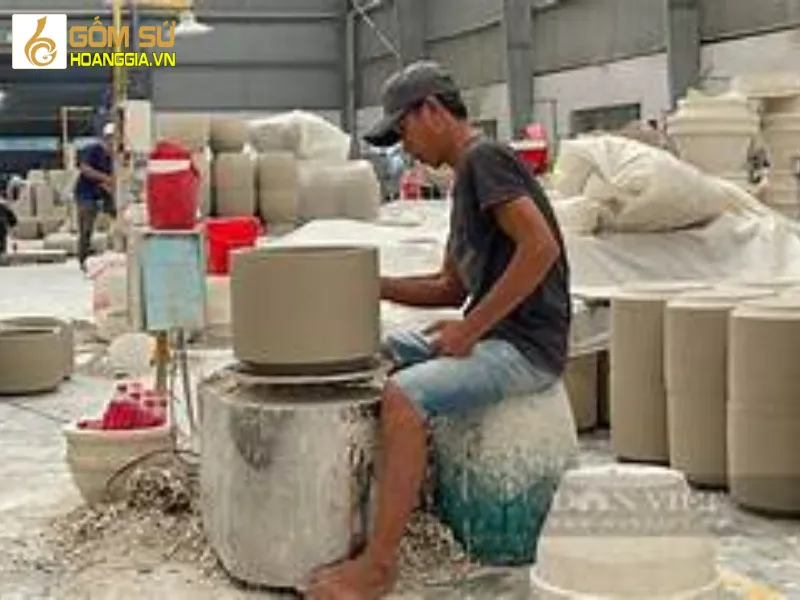
Bien Hoa Pottery Village Today: Harmony Between Tradition and Modernity
Today, Bien Hoa Pottery Village continues to develop and assert its position in the domestic and international ceramic market. In addition to maintaining the production of traditional pottery products, pottery establishments in Bien Hoa are also constantly innovating, creating, and applying new technologies to production to improve quality, designs, and meet the diverse needs of the market.
Bien Hoa pottery today not only serves daily household needs but is also favored in interior and exterior decoration, as gifts, and souvenirs… Bien Hoa pottery products are exported to many countries around the world, especially markets in Europe, America, and Southeast Asia.
To meet the requirements of large-scale production and ensure stable quality, many pottery establishments have switched to using industrial kilns. However, there are still many artisans dedicated to the craft, still maintaining the traditional handmade pottery method, creating unique pottery products with high artistic value. The harmonious combination of traditional and modern elements has created a new vitality for Bien Hoa Pottery Village, helping the craft village develop sustainably in the context of increasingly fierce integration and competition.
Important Notes When Exploring Bien Hoa Pottery Village
To have a complete and meaningful visit and experience at Bien Hoa Pottery Village, you should note a few things:
- Research information beforehand: Before going, you should research information about Bien Hoa Pottery Village such as history, typical products, famous production facilities… to have an overview and prepare well for the trip.
- Visiting time: The ideal time to visit the pottery village is in the morning or cool afternoon. You should avoid going during the hot midday sun.
- Dress code: Choose comfortable, neat clothes suitable for moving and visiting. You should wear flat shoes or sandals for easy walking in the pottery village.
- Respect the working space: When visiting pottery workshops, you should keep order, avoid making noise, and avoid affecting the work of the artisans.
- Ask permission before taking photos: If you want to take photos of artisans working or pottery products, you should ask for permission first.
- Support by purchasing products: To support artisans and the craft village, you can purchase ceramic products at stores or production workshops in the village.
- Maintain environmental hygiene: Do not litter indiscriminately, maintain general hygiene to protect the landscape and environment of the pottery village.
- Negotiate prices: When shopping, you can negotiate prices with sellers to buy products at the best price.
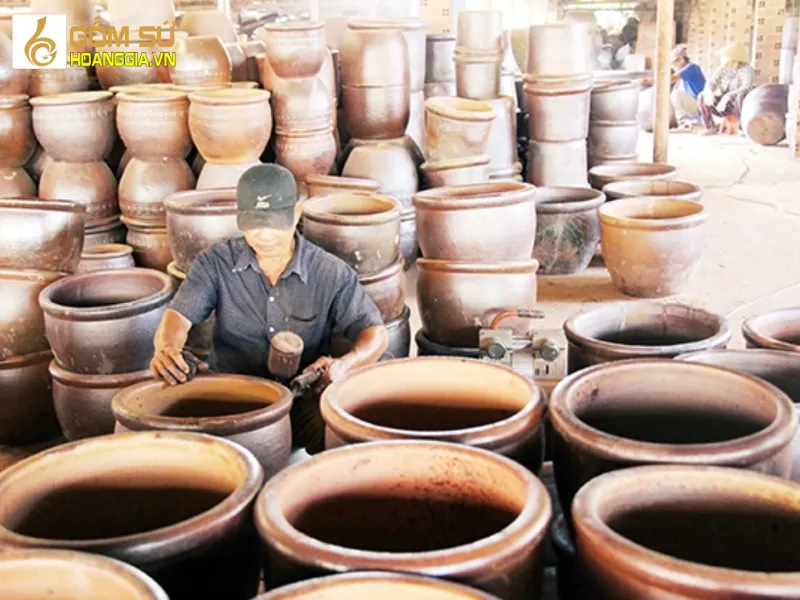
Answering Frequently Asked Questions about Bien Hoa Pottery Village
To help you understand more about Bien Hoa Pottery Village, we have summarized some frequently asked questions and detailed answers:
-
Where is Bien Hoa Pottery Village located?
Bien Hoa Pottery Village is located in Trang Bom district, Dong Nai province, about 10km from the center of Bien Hoa city.
-
What are the main raw materials for producing Bien Hoa pottery?
The main raw materials are white clay (kaolin) and common clay, mainly mined from the Binh Phuoc region.
-
What is the distinctive feature of Bien Hoa ceramics?
Bien Hoa pottery is famous for its unique dot glazing technique, diverse and vibrant decorative patterns, and a liberal style of expression, close to nature.
-
Is there an entrance fee to visit Bien Hoa Pottery Village?
There is no entrance fee. However, if you want to visit the exhibition area or experience other activities, you can buy tickets at a reasonable price.
Conclusion
Exploring Bien Hoa Pottery Village is a fascinating and meaningful journey, helping you learn more about the history, culture, and traditional ceramic art of Vietnam. Come to Bien Hoa Pottery Village to witness exquisite pottery artworks, meet talented artisans, and feel the peaceful pace of life in the craft village, you are sure to have unforgettable memories. We hope this article has provided you with useful information and sparked your interest in exploring Bien Hoa Pottery Village. Wishing you a happy and meaningful trip!